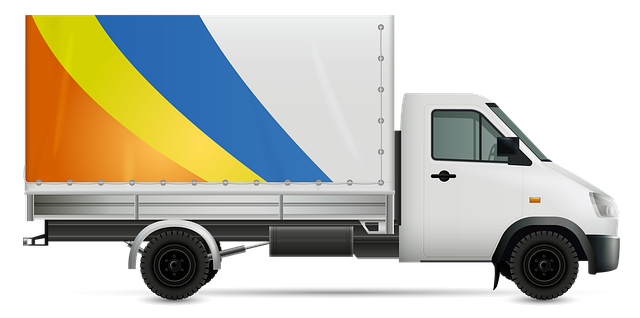Fleet liability insurance is a critical safety net for businesses owning commercial trucks, offering comprehensive protection against accidents, property damage, and injuries. It simplifies coverage, reduces costs, and enhances efficiency by bundling policies for all vehicles and employees under one policy. Key factors influencing rates include vehicle type, age, driving records, and usage distance. To save costs, optimize risk management by reviewing current coverage, implementing safety training and maintenance, exploring tailored options from providers, and regularly adjusting coverage as the fleet evolves.
Simplifying coverage with fleet truck insurance is a strategic move for trucking businesses aiming to mitigate risks and optimize costs. This comprehensive guide, ‘Understanding Fleet Liability Insurance’, delves into the intricacies of this specialized policy. We explore its benefits, from reduced legal liabilities to enhanced operational efficiency. Additionally, we provide insights on navigating insurance rates and offer strategies for effective risk management, ensuring your fleet’s protection without breaking the bank.
- Understanding Fleet Liability Insurance: A Comprehensive Overview
- The Benefits of Simplifying Coverage for Your Trucking Business
- Navigating the Factors That Impact Fleet Insurance Rates
- Strategies to Optimize Your Fleet's Risk Management and Savings
Understanding Fleet Liability Insurance: A Comprehensive Overview

Fleet liability insurance is a crucial coverage option for businesses owning multiple vehicles, especially trucks. It offers comprehensive protection against potential risks and financial burdens associated with fleet operations. This type of insurance is designed to manage and mitigate various liabilities that can arise from accidents, damage to property, or injuries sustained by others due to your commercial truck fleet.
By understanding fleet liability insurance, business owners can simplify their coverage and ensure they are adequately protected. It encompasses a wide range of scenarios, including but not limited to, legal expenses, medical costs, and compensation for third-party damages. This all-encompassing nature ensures that should any incident occur involving your fleet, you are financially secured and able to navigate the legal processes with greater ease.
The Benefits of Simplifying Coverage for Your Trucking Business

Simplifying coverage with fleet truck insurance offers significant advantages for trucking businesses aiming to optimize their operations and mitigate risks effectively. By bundling various insurance policies into a comprehensive package, companies can streamline administrative tasks, reduce costs, and enhance overall efficiency. This approach ensures that all vehicles and employees are protected under a single policy, eliminating the need for separate liability coverage for each truck and driver.
Moreover, simplifying fleet coverage improves risk management by providing better protection against potential liabilities associated with trucking operations. Fleet liability insurance covers damages to property and injuries to individuals caused by accidents involving company trucks. This includes legal fees, medical expenses, and settlement costs, offering peace of mind and financial security in the event of a claim. Such streamlined coverage allows business owners to focus on growing their fleet while ensuring compliance with regulatory requirements and maintaining a positive safety record.
Navigating the Factors That Impact Fleet Insurance Rates

Navigating the complex world of fleet insurance can be daunting, but understanding the factors that influence rates is key to simplifying coverage. Several elements play a significant role in determining your fleet liability insurance costs. One of the primary considerations is the type and age of vehicles in your fleet. Older trucks, for instance, might have higher repair and replacement costs, leading to increased premiums. Similarly, specialized or high-risk vehicles used in dangerous operations can elevate insurance rates due to their potential for costly damages or accidents.
Another critical factor is the driving record of your fleet operators. Safe driving practices and a history free from claims significantly reduce insurance costs. Companies with experienced drivers who adhere to traffic rules and maintain good safety records are often rewarded with lower rates. Additionally, the usage of vehicles matters; whether they’re used for local deliveries or long-haul transportation can impact premiums, as the former generally involves shorter distances and potentially fewer risks.
Strategies to Optimize Your Fleet's Risk Management and Savings

Optimizing risk management is key to maximizing savings with fleet truck insurance. Start by conducting a thorough review of your current coverage. Identify high-risk areas and drivers who might be contributing to elevated premiums. Implement targeted safety training programs to mitigate risks, reduce accidents, and lower claims. Regularly maintain and inspect your vehicles to ensure they’re in top condition, minimizing the chances of breakdowns or mechanical failures. Additionally, consider implementing a robust driver monitoring system to track performance, adherence to safety protocols, and behavior behind the wheel. These proactive measures can significantly enhance fleet liability insurance outcomes.
Save costs by exploring different coverage options tailored to your specific needs. Compare policies from various providers to find the best fit that offers comprehensive protection without unnecessary expenses. Bundling insurance with other business services or leveraging loyalty discounts can also reduce overall costs. Regularly reassess and adjust your coverage as your fleet grows or operational needs change, ensuring you’re always covered appropriately while avoiding over-insuring.
By simplifying coverage with fleet truck insurance, trucking businesses can mitigate risks, optimize operations, and achieve significant savings. Understanding fleet liability insurance and its benefits is crucial for navigating the competitive transportation sector. By factoring in key influences on insurance rates and implementing effective risk management strategies, businesses can ensure their fleets are well-protected while maximizing financial efficiency.
